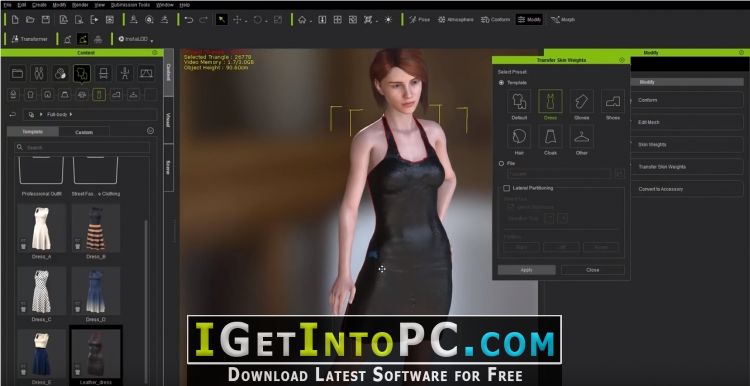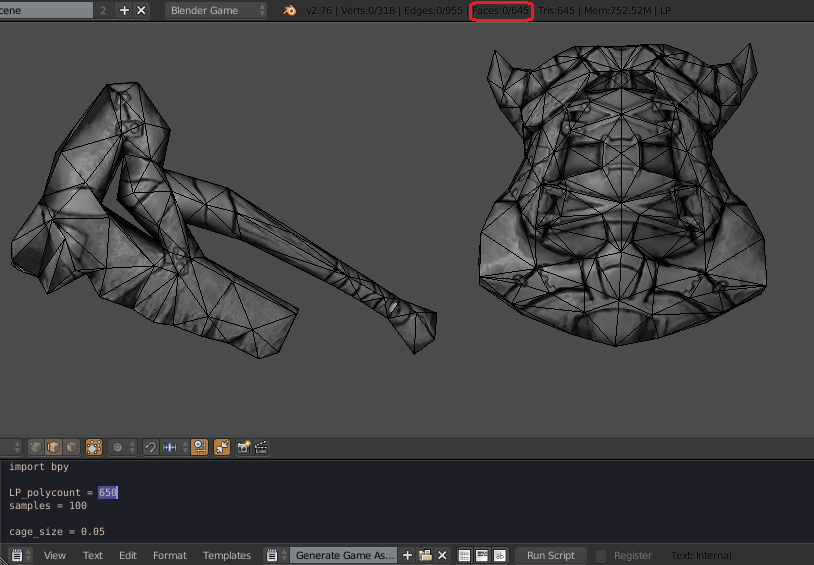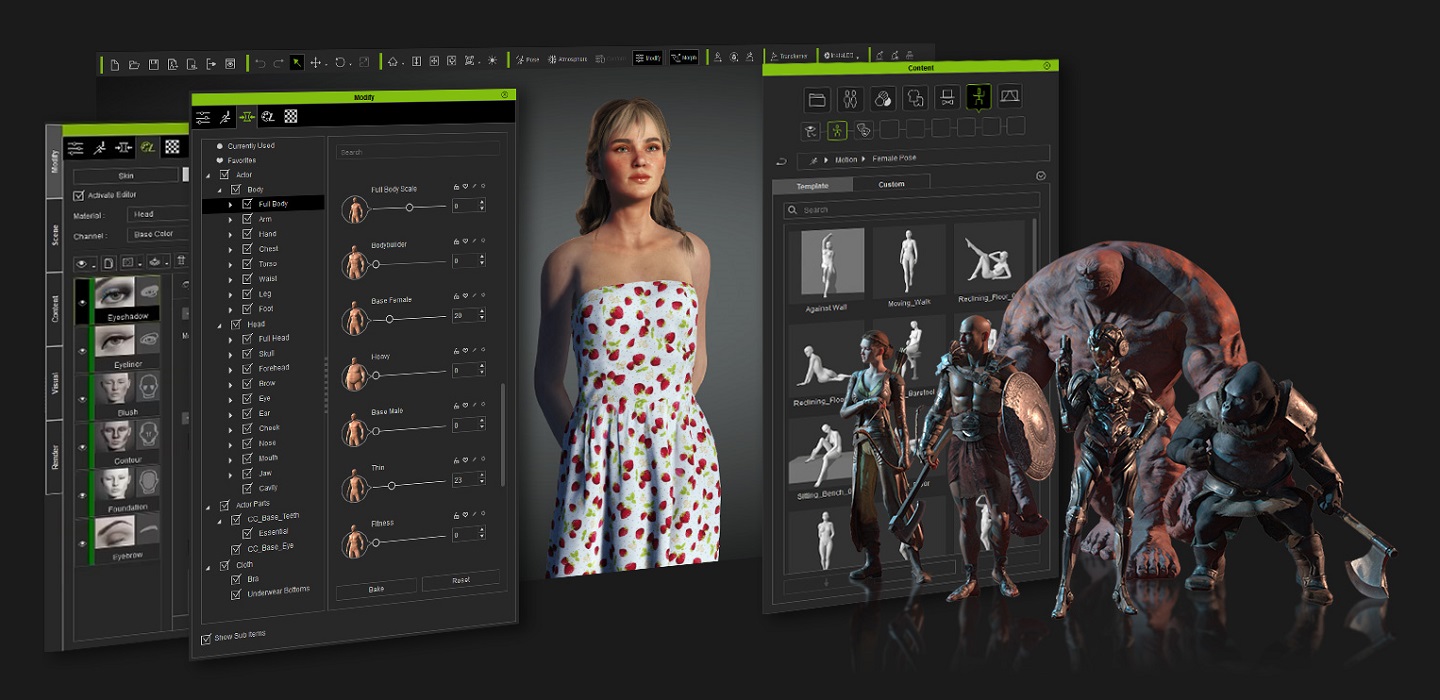Sometimes developers will use Blender to create a 2D or 3D asset for use in a separate game engine, like Unity. If you have no experience with Blender and want to build a “low polygon full textured game model” then this is the tutorial for you. If you just want to use Blender to make game art right now, then you can start with this tutorial. Find game assets tagged 3D like Gameboy Cartridge + Box, Voxel Robot assets for free, Low Poly 3D and Pixel 2D RPG Game Assets - Devil's Work.shop, Voxel environment assets: Desert town, Voxel dungeon crawler environment assets: Desert on itch.io, the indie game hosting marketplace.
Download Tutorial Intermediate Game Asset Creation – 3D Modeling in Blender
This course has been specifically designed with you in mind and we have developed a system to allow you to learn just what you need to know, only when you need it.

Have fun while learning! Learn by actually doing!
After enrolling in this course, you’ll be taken through a complete intermediate project that will show you how to recreate a 3D game asset from start to finish. Follow along and practice while learning!
Downloadable project files make it easy to follow along and practice.
The best part about a course like this is that you won’t waste time learning tools and functions inside of Blender that you will never use. Most courses will tell you about every little part of the program, which is daunting to most people.
Intermediate Game Asset Creation – 3D Modeling in Blender will show you the necessary tools as you apply them.
This course will cover every aspect of:
- Blender and 3D-Coat’s Interface and How to Navigate It
- 3D Modeling a Complicated 3D Game Asset
- UV Unwrapping and Understanding How UVs Work
- How Normals Work and How to Bake Textures Into Your Model
- Texturing Your Game Asset with Smart Materials
- Exporting Your Model to Unity, the Number One Game Engine
- and so much more!
Whether you want to create game assets just for fun, or you work in a production studio and need this information done right this instant, this course is for you. We will guide you every step of the way and are here to make sure you succeed in your ventures. We are always available to answer any messages, discussions, questions, or feedback that you have.
Get a Certificate of Completion when you finish the course!
With our 30-Day 100% money back guarantee, there’s no reason hesitate!
ENROLL NOW
- This course is geared to anyone who wants to learn how to use Blender as well as intermediate 3D modeling, texturing, rendering, and exporting techniques.
- A prior knowledge of Blender is recommended, though students who are beginners and follow along carefully can learn Blender rather quickly as we cover the different aspects of the using the software.
- Anyone who is looking for a complete Blender course that explains every tool and facet of the application should not take this course. This is a course that provides a practical project for 3D artists in real world settings, so not every tool and function will be explained.
Screenshot Tutorials/Courses
Download Tutorials/Courses
Password : freetuts.download
Learning to model is crucial for anyone trying to master Blender. As the foundation of everything in 3D graphics, modeling is a necessary hurdle that every student will need to leap.
Luckily there’s plenty of help online to teach yourself how to model.
One of Blender’s best features is the large community behind it. Over the years they’ve created an abundance of learning resources and this guide offers the best of the best when it comes to modeling in Blender.
No matter your budget or current skillset this list is sure to help.
Free Tutorials
Beginner Modeling Tutorial (Multipart)
Blender Guru is one of the most popular Blender YouTube instructors.
I often point students to these lessons when they’re just getting started with Blender in general.
In this series Blender Guru teaches the fundamentals of modeling. But instead of doing a car or a character, students will learn how to model a medieval blacksmith’s anvil.
Why?
Because modeling more complicated objects can be difficult for beginners. It’s likely they’ll run into trouble and give up. Blender Guru argues that starting with something simpler like an anvil is better for learning the principles of 3D modeling.
Character Modeling
After you’ve learned some of the basics it’s time to try a character.
Since characters are the bread and butter of most 3D graphics, it’s good to tackle this subject early on and keep practicing.
This 10-part series will walk you step-by-by through the modeling process in Blender. It covers everything from modeling a character’s face to the hands and feet.
Game Asset Creation 3d Modeling In Blender Free Download Torrent
With this series you will get an in-depth look at the first steps necessary to building high-resolution characters for video games or movies. These are the foundational skills needed to succeed in computer graphics so this lesson is essential for all beginners.
Modeling Charmander
In this tutorial by 3D artist Arturs Luksis you’ll observe the workflow of character creation in Blender.
More specifically you get to build a beloved Pokemon character from scratch with lots of guidance.
Starting with a low-poly model, the artist continues through the creation of the high-resolution character as well as texturing, rigging, weight painting, and animation.
This tutorial will teach the full workflow of character modeling in Blender. This is truly a powerful showcase of Blender’s tools and features.
Star Wars Tie Fighter
Focusing on hard surface modeling, top YouTube talent CG Geek demonstrates the process of creating a high-resolution Tie Fighter from the Star Wars universe.
CG Geek shows you how to take your modeling skills to the next level by using the mirror modifier to achieve perfect symmetry.
Add Blender’s subdivision surface modifier to pump up the detail without losing the original geometry. Working in this non-destructive manner will add lots of flexibility to your workflow.
The techniques in this video will translate well to other hard surface objects such as cars and planes where angular precision and tight geometry are key.

Gun Hard Surface Modeling
With this Oranhunter Modeling video you’ll get a chance to further develop your hard surface modeling skills by making a weapon.
Specifically you’ll be making a gun from Blizzard’s blockbuster game Overwatch.
This tutorial offers some tips and tricks for keeping your polygon count low without sacrificing detail.
By focusing on keeping good quads(four-sided polygons) it’s easier to develop a clean model from scratch. This will be important later when it comes to texturing and animating the object.
Oranhunter Modeling combines the mirror modifier and the subsurface modifier to gain accuracy, speed, and detail.
Combining these two modifiers is a common technique used by many Blender artists.
Create Any Low-Poly Animal
Low Poly scenes are still the rage and making them in Blender is a breeze once you learn the ropes.
In this video you’ll pick up some simple techniques for making low-poly models even if you’ve never done it before.
Grant Abbitt is a YouTube tutorial superstar who offers short videos and a relaxed teaching style. In this 10-minutes tutorial Abbitt walks you through the process of low-poly modelling with step-by-step instructions.
If you need some further explanation about the topics covered in this modeling tutorial, such as the mirror modifier, check the links in the description featuring even more of Abbit’s guides.
Game Asset Modeling
This advanced Blender tutorial by 3D artist AlienMinefield is targeted at those who are already comfortable with modeling in Blender.
You should know the basics of modeling and texturing before diving in since this can be a complex subject.
But this multi-part series teaches the workflow of game asset creation including object modeling, UV-unwrapping, and UV-packing.
Creating a complex model is difficult but planning can save you trouble down the road. Artists will often model an object in a way that makes it easier to add materials and this is exactly what you’ll learn here.
Artists looking to work in games will want to check out this Blender tutorial. The skills used to create industrial crates will easily lend themselves to other objects that you’ll find in a production workflow.
Blender Hair Tutorial
Creating hair in any 3D program is no easy task. But Nazar Noschenko will guide you through making realistic hair using particle systems in Blender.
By stacking particle systems and slowly working up the head from the base of the neck, 3D artist Nazar Norschenko achieves a highly sculpted and realistic figure with a stylish hairdo.
It’s a somewhat painstaking technique but the results speak for themselves.
If you want to achieve high resolution hair for your characters you’ll need to work with Blender’s particle system and hair settings. This video offers a fantastic intro to the subject.
After modeling the hair you’ll learn how to take it a step further and render the final image by adding color and other effects.
Blender has fully equipped lighting and rendering features that can be used to create almost any effect you desire.
Creating A Nature Scene
This wonderful tutorial by Wayward Art Company offers a step-by-step guide to constructing an elaborate nature scene in Blender.
Starting with a blade of grass, the instructor shows you how to build an inspiring scenic view complete with trees, mountains, and clouds. No detail is left out in this 45-minute Blender demo.
You’ll even learn how to use particle systems to add moss to your trees and rocks.
Once you’ve created the set pieces and added your lights, creating interesting images becomes a simple matter of positioning your camera and adjusting the scene.
Blender’s powerful rendering features give you plenty of possibilities to explore. Render often and adjust accordingly.
Simple Trees
This 15-minute tutorial video by Toxicity Game Dev teaches beginners an easy method for making an unlimited number of low-poly trees. In just a few minutes you could have a low-poly forest ready to go.
Aimed at game development, this tutorial will show you how to get the most out of Blender while making game assets.
One helpful trick is to set the origin of the object to its base.
Not only will it scale along the ground plane, but game engines like Unreal and Unity look for the origin when instantiating objects in the scene. This makes it easier to place them when building game levels.
Using these methods will make it easier to work with your models in any modern game engine.
Rocket Plane Modeling
This half-hour video teaches a bunch of useful tools for modeling in Blender.
For example: you’ll learn how to make a WWII rocket plane as an easy introduction to hard-surface modeling. This step-by-step process can teach a whole lot so it’s best to move slowly and carefully.
This is a good tutorial for artists looking to hone their skills in creating vehicles for games.
3D Isometric Game Tiles
Here’s a fun guide teaching you how to create cute and colorful tiles for an isometric scene.
Follow along with the time lapse to see how the artist builds low poly models and applies materials to create the final look.
By playing with materials it’s relatively easy to get effects for dirt, grass, and water. Adding stones and individual blades of grass gives the scene a high-quality finish.
Create A Realistic City
Blender’s community has created some fantastic add-ons that can be extremely useful.
One of these is the Open Street Map add-on which can generate real life buildings and street lay-outs fast.
By visiting the main website Blender artists can export a map of any city they want. After installing the add-on and enabling it in Blender it’s easy to import the data and generate a copy of the map complete with buildings and real-life city layouts.
Open Street Map is powered by an open source community of mappers that contribute data about streets, buildings, and more.
By combining this add-on with Blender’s rendering tools you can follow along with this tutorial to create a beautiful cityscape within just one hour.
Awesome Modeling Hacks
Zacharias Reinhardt offers a list of 14 tips to improve your Blender experience. There’s also some links in the description to modeling courses for those looking to up their game.
These are some very handy tips that will save you time and frustration. Blender is a such a large program that it can take a long time to discover all the hidden shortcuts and special features.
Everything on this list is useful, but my personal favorites include combining the bevel and subdivision surface modifiers to get crisp, high-poly models. And resetting the key frame positions with a hidden shortcut.
Premium Courses
Premium video series are designed to accelerate your development by learning from high-quality sources.
Professional instructors and long-format tutorials offer a better approach for most people getting into the 3D world.
So whether you’re a complete beginner or just looking to take your skills to the next level, the following courses are a perfect place to start learning how to make amazing Blender artwork.
Intro to Modeling in Blender
This beginner’s guide will teach you everything you need to get started in Blender.
3D artist Justin Marshall teaches some of the skills that landed him a job at Sony Imageworks in Los Angeles.
This series focuses on foundational knowledge that will be used all the time as you progress in Blender.
After covering the most basic information about polygon geometry the instructor introduces all the tools needed for modeling in Blender.
However this series takes a slightly different approach than other beginner tutorials. Instead of covering all the options for modeling in Blender, Justin Marshall narrows the focus to only the most useful tools.
Creating Assets
In this tutorial series by artist Mark Masters you’ll explore how to make an asset in Blender from start to finish.
You’ll begin with a basic model and then move onto UV unwrapping and material creation.
Masters will take you through the process of building a realistic soda bottle using Blender 2.77.

Throughout the series you’ll find expert advice on Blender’s toolset to create polished, professional assets. Perfect for anyone looking into 3D work as a career.
By the end of this course you’ll have all the skills necessary to take full advantage of Blender’s asset creation pipeline and bring your own ideas to life.
Designing & Modeling a Sci-fi Prop
3D environment artist Denis Osmanbegovic covers a lot in this series along with sharing a few skills that landed him a job as an artist on Halo 5.
Game Asset Creation 3d Modeling In Blender free. download full
With this course you’ll learn how to create a 3D sci-fi prop for a game or movie all from scratch.
You’ll begin by learning how to adjust Blender’s settings to get the most of the modeling tools before moving onto shaping a basic object. Then you’ll learn how to apply materials and lighting to create a rendered image.
Osmanbegovic’s goal is to teach you how to use Blender efficiently so that you can be more productive as you continue learning.
Creating a Cartoon-style Character
This lengthy series from Pluralsight teaches the ropes of character creation in Blender.
By exploring various modeling techniques, instructor Costas Frost teaches you how to work on your own and encourages everyone to experiment with Blender’s toolset.
This video course focuses heavily on cycles rendering and cycles materials. By the end you’ll have a solid grasp of the Blender character modeling workflow.
Designing a Low Poly Game Environment

Moving back into low-poly work we have this incredible series tailor made for environment artists.
Anyone looking to work in mobile game development or as a freelancer will want to check out this course by Jeannot Landry.
Game content creation is one of the most common jobs for freelance 3D artists. In this Blender series you’ll learn some techniques for creating low polygon environments that are perfect for mobile gaming.
You’ll also study the pipeline for hand-painted assets and environment creation using Blender. By the end of this series you should have enough knowledge to build your own game assets and start building up that 3D portfolio.